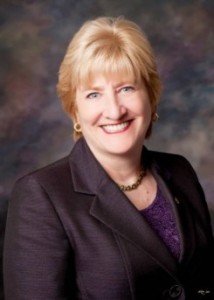Specialist physicians will benefit from enriched medical laboratory consultations involving pathologists and other clinical laboratory scientists
Increasing numbers of medical specialists are launching patient-centered specialty practices (PCSP). This trend has implications for clinical laboratories and pathology groups because these office-based physicians will want tighter clinical and operational integration with other healthcare providers who treat the same patients.
Specialist physicians are watching the growth of patient-centered medical homes (PCMHs) and how PCMHs are organized to provide proactive clinical services and maintain access to patients. In adopting this care model for specialty medical practices, these specialists will typically utilize a more extensive menu of medical laboratory tests and anatomic pathology professional support from their laboratory providers.
Medical Home Model Is Attractive to Specialist Physicians
The number of specialist physicians who operate their practice as a PCMH is small, but growing, according to a recent story published in Modern Healthcare. Primary-care physicians (PCP) serve as the central hub of care in most of today’s PCMHs.
But the primary-care PCMH model might not best serve all patients, according to a paper titled “Specialists/Subspecialists and the Patient-Centered Medical Home,” published online at chestnet.org. Patients receiving long-term, principal care from specialists, or subspecialists, might be better served having that practice act as their hub of care.
“[S]ome of our patients might not use a primary-care doctor,” stated Grand Junction, Colorado-based endocrinologist Carol Greenlee, M.D., in the Modern Healthcare story. “[S]o we have to look after them a little more.” Greenlee operates her solo practice as a PCMH.
Specialty Practices Must Align with Medical Home Principles
In 2008, the National Committee for Quality Assurance (NCQA) developed a recognition program for primary-care practices that had successfully created PCMHs, according to NCQA’s website. This means the recognized practices had designed their operations around the patient-centered care principles of:
• enhanced communication and coordination of care;
• expanded access;
• provider teamwork;
• proactive assistance; and,
• continuous performance tracking and quality improvement.
Primary-care practices anchor the majority of NCQA-recognized PCMHs, Modern Healthcare reported. However, primary-care services account for only 6% of total healthcare spending, wrote cardiologist Xiaoyan Huang, M.D., in an article published in The New England Journal of Medicine (NEJM). Dr. Huang is Medical Director, Cardiology, at Providence Milwaukie Hospital in Milwaukie, Oregon.
Specialty providers significantly drive the scope and intensity of healthcare services—and healthcare spending, Huang pointed out. There has been widespread reform of the primary-care practice, she stated. However, specialty practices have remained largely unchanged. “PCMH transformation is necessary but not sufficient for fundamentally changing healthcare,” wrote Huang. “[P]rimary care cannot be the only point of leverage.” This is particularly true for patients who rely heavily on specialty and acute care services.
NCQA Now Recognizes Patient-centered Specialty Practices
The effectiveness of the PCMH model depends on the availability of a high-performing, collaborative “medical neighborhood,” according to the paper published at chestnet.org. Specialists serving patients in a PCMH must align with the principles of coordinated care. However, building effective partnerships between PCPs and specialists is one of the challenges of developing the medical neighborhood.
Some specialists are looking beyond just being a good “neighbor” in a primary-care PCMH model. Instead, they are beginning to transform their own practices to function as PCMHs. As Huang stated in the NEJM, specialty practices risk being marginalized if they do not embrace a more population-based approach and provide better value.
Accordingly, NCQA launched its Patient-Centered Specialty Practice recognition program in 2013. The purpose was to acknowledge specialty practices that had aligned their operations with the principles of the PCMH model, Modern Healthcare reported. The program particularly targets specialties that tend to assume care management roles for patients, such as oncology, endocrinology, and cardiology.
Grant Funds Seven-State Project to Expand Oncology Medical Home Model
One Albuquerque oncologist is currently spearheading a seven-state oncology medical home demonstration project, Modern Healthcare reported. Barbara McAneny, M.D., is CEO of the New Mexico Cancer Center. She received a $19.8-million healthcare innovation demonstration grant from the Center for Medicare and Medicaid Innovation. Her innovative project will expand her oncology medical home model to centers in Florida, Georgia, Maine, New Hampshire, Ohio, and Texas.

Barbara L. McAneny, M.D. (pictured above) is CEO of the New Mexico Cancer Center. As an oncologist/hematologist, she is a specialist physician who is transforming her practice into a specialty-based patient-centered medical home (PCMH). McAneny received a $19.8-million grant from the Centers for Medicare & Medicare Innovation to expand her PCMH model to several other states. Her innovative demonstration project has already realized significant savings using the specialty practice-based, patient-centered care model. (Photo copyright New Mexico Cancer Center.)
The project has 7,200 participating cancer patients. Under her specialty-practice PCMH model, hospitalization rates have dropped from 25 to 18 days per 1,000 patients, according to McAneny’s calculations. She expects to save over $33.5 million for Medicare and Medicaid beneficiaries with lymphoma or several types of cancer.
Reimbursement for Specialty-Practice Medical Homes
Currently, even NCQA-recognized specialists receive no additional payments from insurers for adding patient management services. Greenlee’s project is one example of the benefits of this type of PCMH. She spends considerable time studying patients’ medical records and communicating with their other doctors, according to Modern Healthcare. Greenlee currently receives no reimbursement for these non-face-to-face encounters.
The number of specialty practice PCMHs is growing. Specialists like Greenlee hope this will motivate payers to begin financially rewarding them for this higher level of service provided patients. “We’re starting to see some payer support,” stated Leah Kaufman, head of outreach efforts at NCQA.
Savvy pathologists and clinical laboratory professionals will want to keep pace with this trend by developing strategies to offer high-value consultative laboratory services to specialists and subspecialists who are transforming their practices into PCMHs.
—Pamela Scherer McLeod
Related Information:
Coordinating Care in the Medical Neighborhood: Critical Components and Available Mechanisms
Envisioning a National Healthcare Quality Report
The Future of Patient-Centered Medical Homes
Transforming Specialty Practice—The Patient-Centered Medical Neighborhood
Specialists/Subspecialist and the Patient-Centered Medical Home



